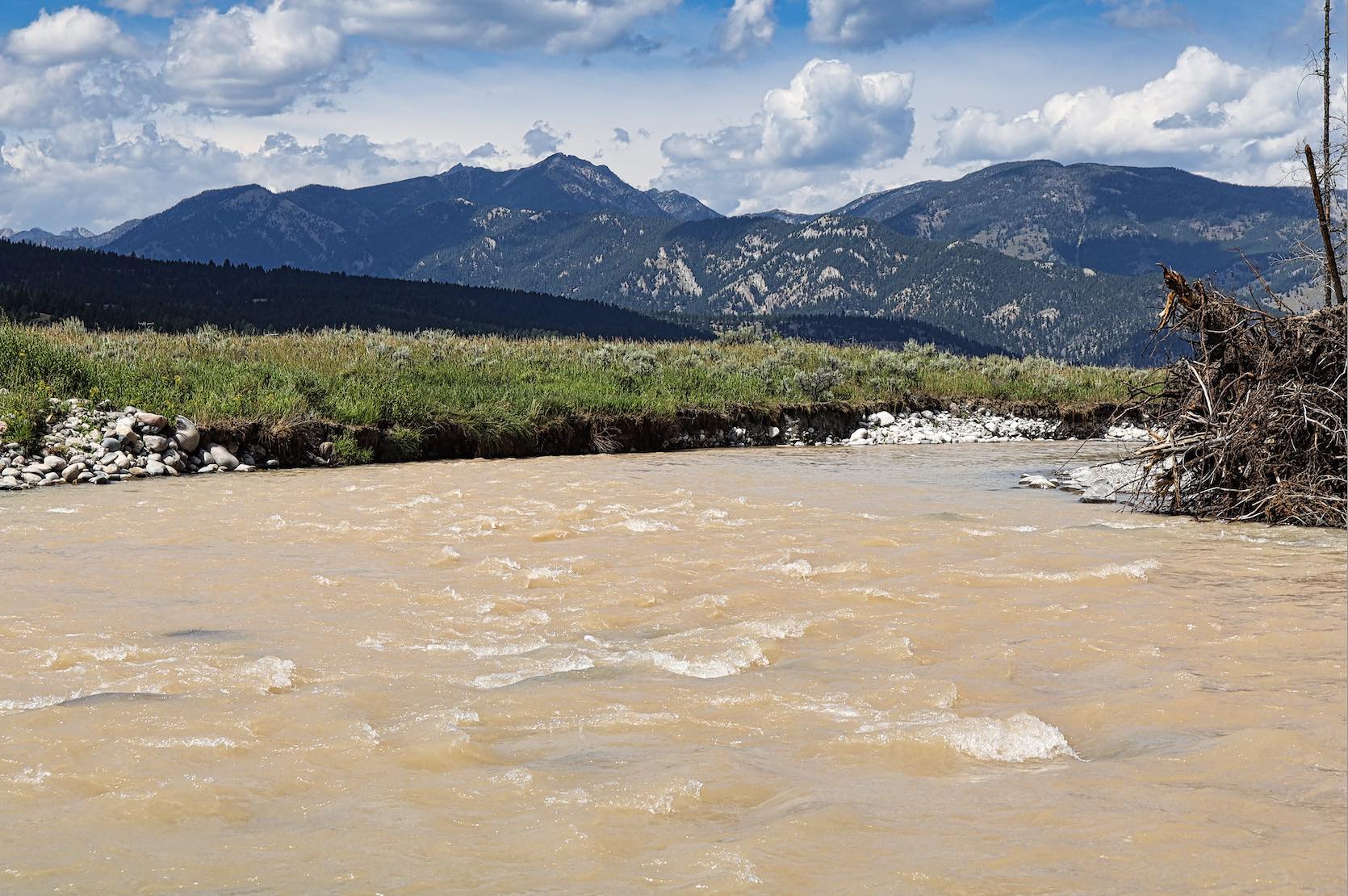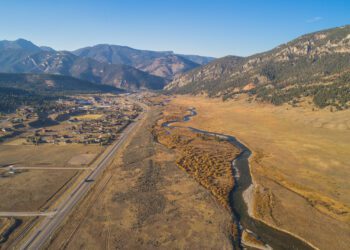By Paul Swenson EBS COLUMNIST

Have you ever been fishing on the Gallatin River in the middle of a beautiful summer day, taken a break to change flies, or have a snack, only to stand back up and realize the river is changing color? As you stare at the river you realize it’s not just cloudy, but the water turns milky, then chocolatey. What’s going on? You ask locals, and they reply, “Taylor Fork.”
It is true that Taylor Fork of the Gallatin River is the tributary that contributes the sediment to the river, but what is the cause?


During the summer months thunderstorms are usual events in the late afternoons and evenings. Driven by warming from the sun, humid air is lifted into the atmosphere where it condenses to form cumulus and cumulonimbus (thunderhead) clouds. As the clouds mature, the updrafts from the heated air cannot support the weight of the growing ice particles and water droplets, so they begin to fall and deliver afternoon showers. When storms are large enough, they can deliver inches of precipitation in a very short amount of time. And when this happens on bare hillsides, muddy runoff results.
The surface geology of the Taylor Fork basin from Wapiti Creek to Cache Creek, Pika Point to Cinnamon Mountain is dominated by late Cretaceous (about 110 million years old) shales that were part of a sea that extended from the present Gulf of Mexico north into Canada. This sea was bordered to the west by the ancestral Rocky Mountains whose erosional remnants we now call home.
During the formation of the Rockies a large chain of volcanoes like today’s Andes mountains of South America, were active to the west of us. These volcanoes sent large ash clouds drifting to the east over the sea. Ash settled to the bottom of the water column and became incorporated into the sediment on the floor. These ash layers set us up for our present situation.


The Albino Formation, which is a small member of a much larger group of rocks, has outcroppings throughout the Big Sky region, but none as apparent as the ones exposed along Taylor Fork. It has many layers of clay, shale, and volcanic ash and tuff, a light, porous rock. The colors of these rocks are white, light tan, pastel pinks and reds, and some dark grays. As seen in the photographs, most of the lighter layers are free of vegetation due to their composition, Bentonite. Bentonite is a swelling clay, which means it absorbs water, and in the process increases its volume up to a factor of eight. Once saturated, the clay will not let any more water be absorbed, so it must run off.
Bentonite is usually formed from volcanic ash that has been deposited in water. The ash, which is a silica and sodium, or calcium based glassy material, is devitrified, which means the silica is slowly removed in a leaching process, leaving a sodium or calcium rich clay behind.
The swelling action of bentonite clays is used commercially for pond liners, drilling muds, and even clarifying agents in wine making, mainly white wine, to attract and remove unwanted proteins that would otherwise cause sedimentation in the wine.
As the swollen clay dries out, its volume must be reduced, leading to a texture called “popcorn clay.”

So back to our muddy Gallatin. As a large thunderstorm moves through the Taylor Fork basin and unleashes its torrential rain, the bentonite and other clay minerals in the Albino formation absorb water and swell, leaving no other place for the water to go but to erode the hill and runoff into the creek. Since these clays also seal the hillside from groundwater, plants cannot grow there, so more erosion occurs and the cycle continues.
Looking down from the hillside, one can see where the clays are being washed out into the valley and then the creek. Since this is happening 4 to 10 miles up the drainage, it takes the muddy water somewhere between three to six hours to make its way down the creek, then another three or four hours to make it down the Gallatin to Big Sky, where we get to watch a “mud plug” change the color of the river for a few hours.

So, the next time you see a mud plug, just remember it’s 110-million-year-old ash from volcanoes that helped build the landscape that we now enjoy.
Paul Swenson has been living in and around the Big Sky area since 1966. He is a retired science teacher, fishing guide, Yellowstone guide and naturalist. Also an artist and photographer, Swenson focuses on the intricacies found in nature.











